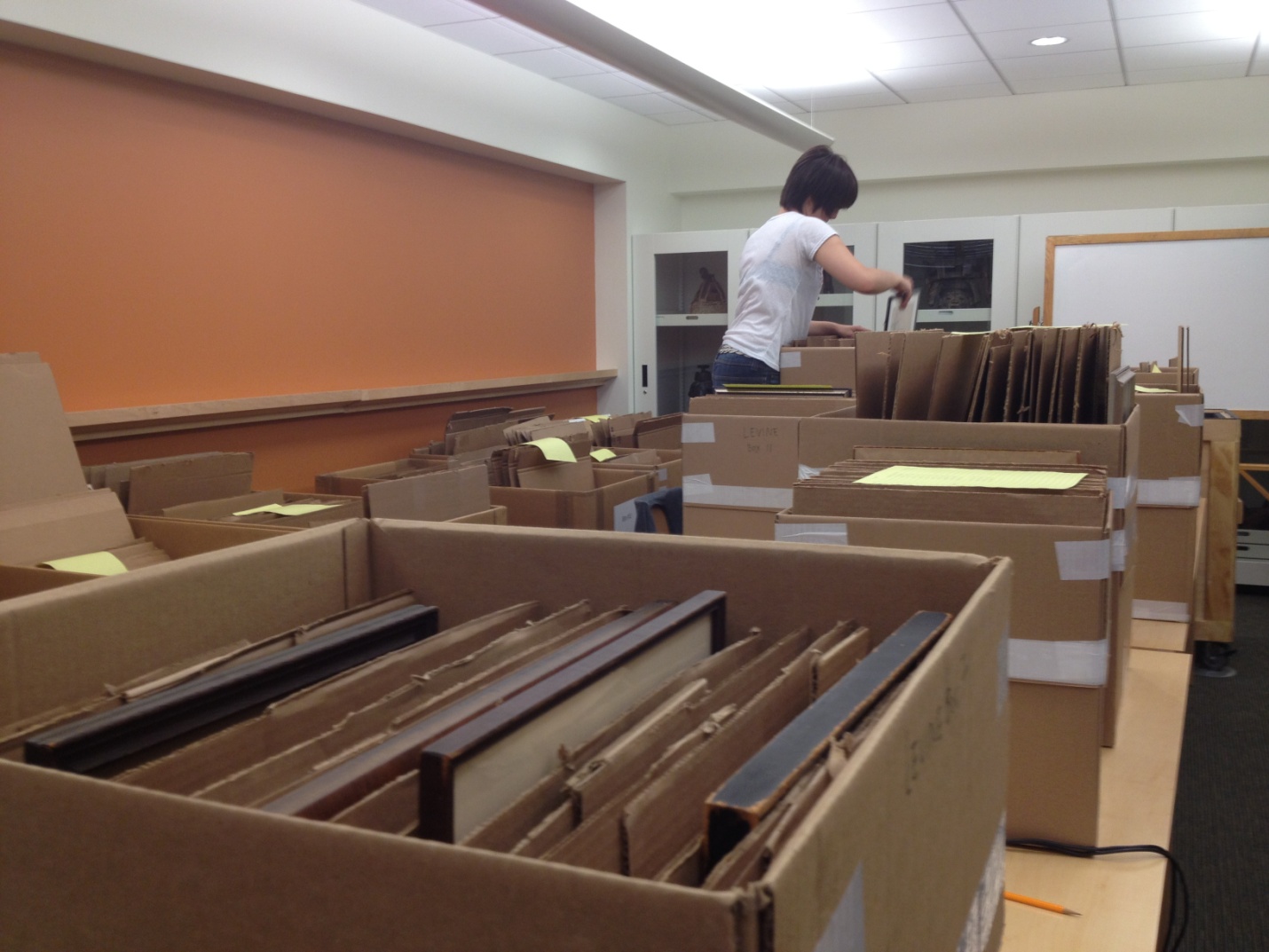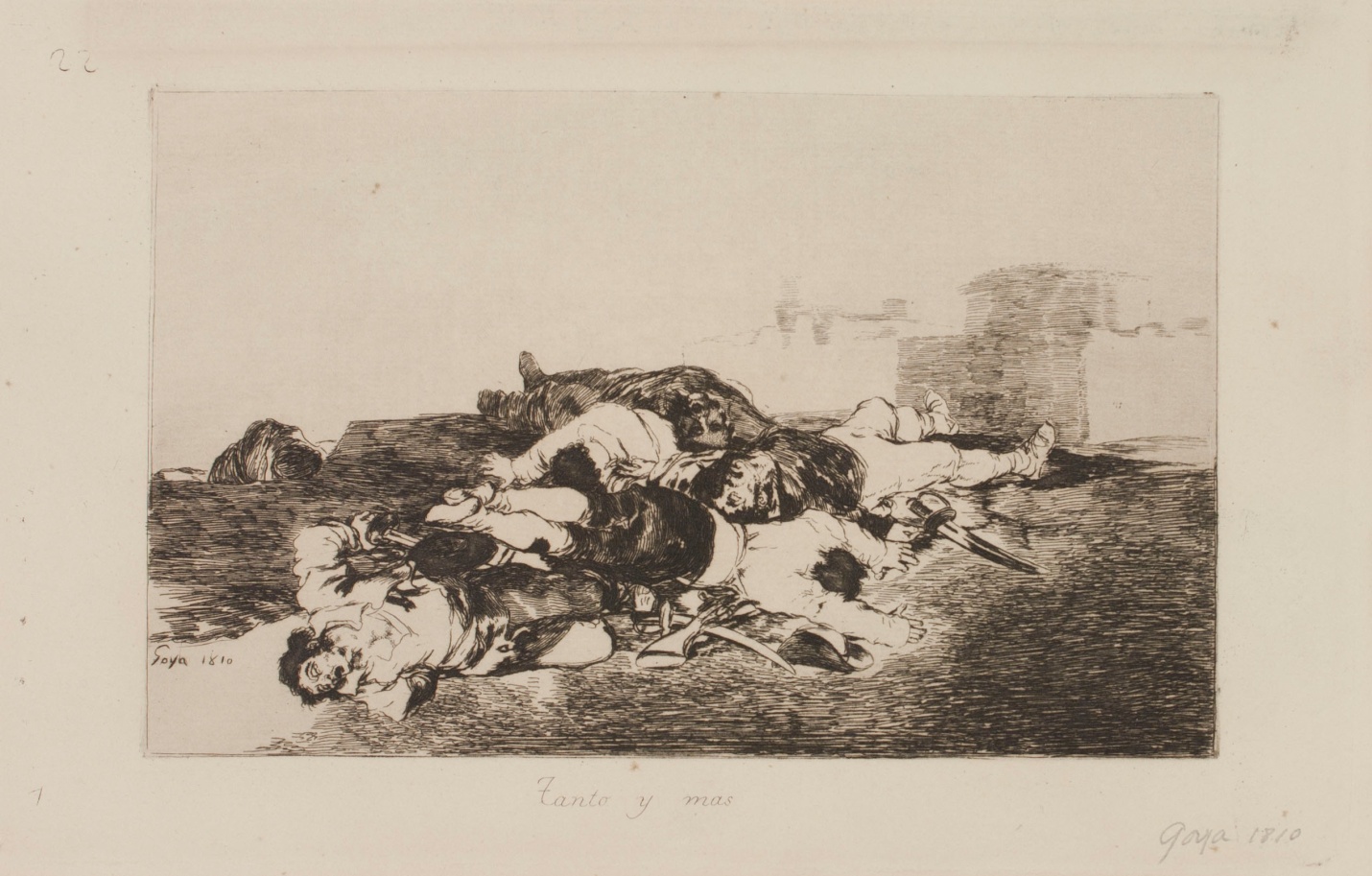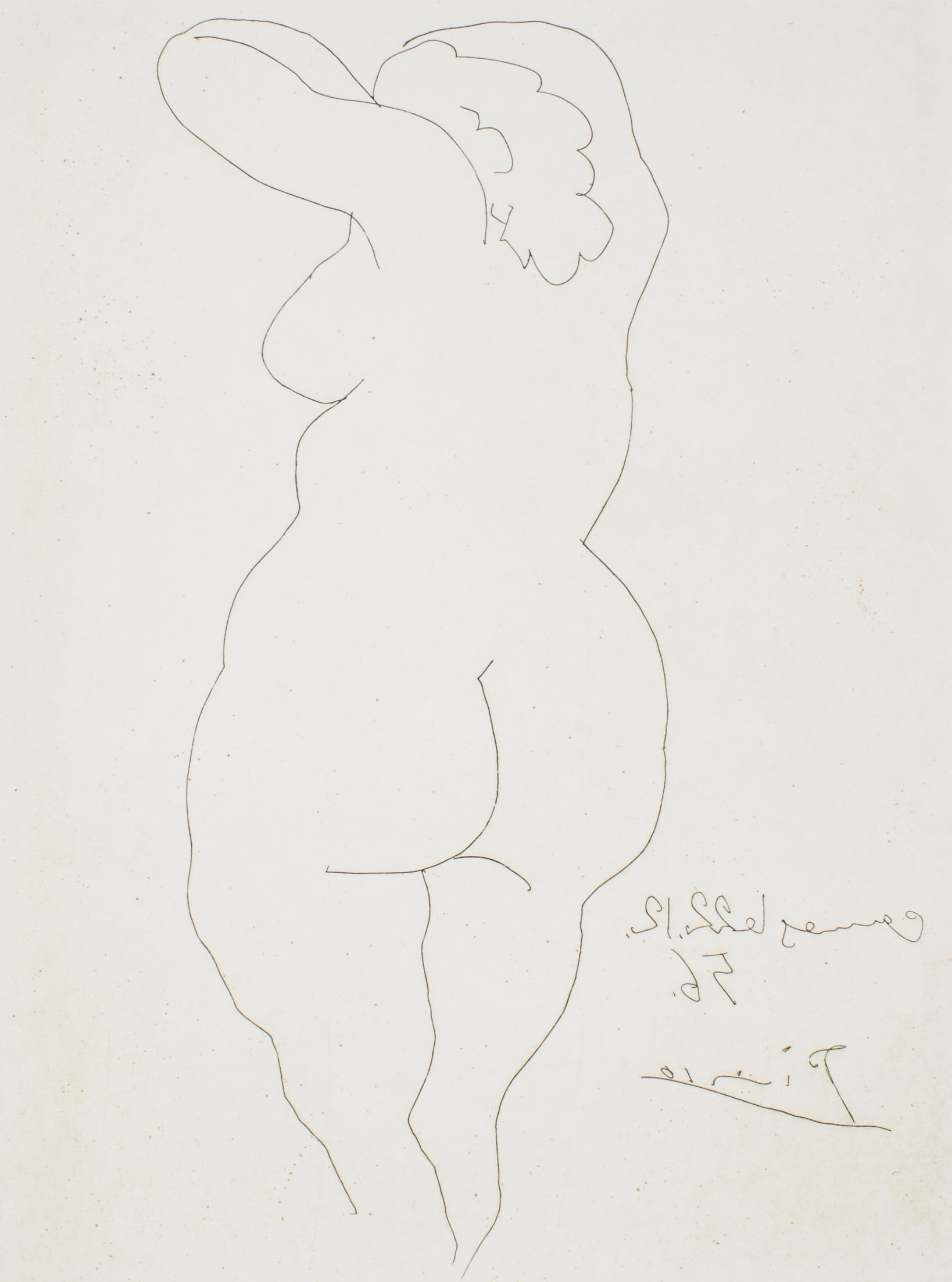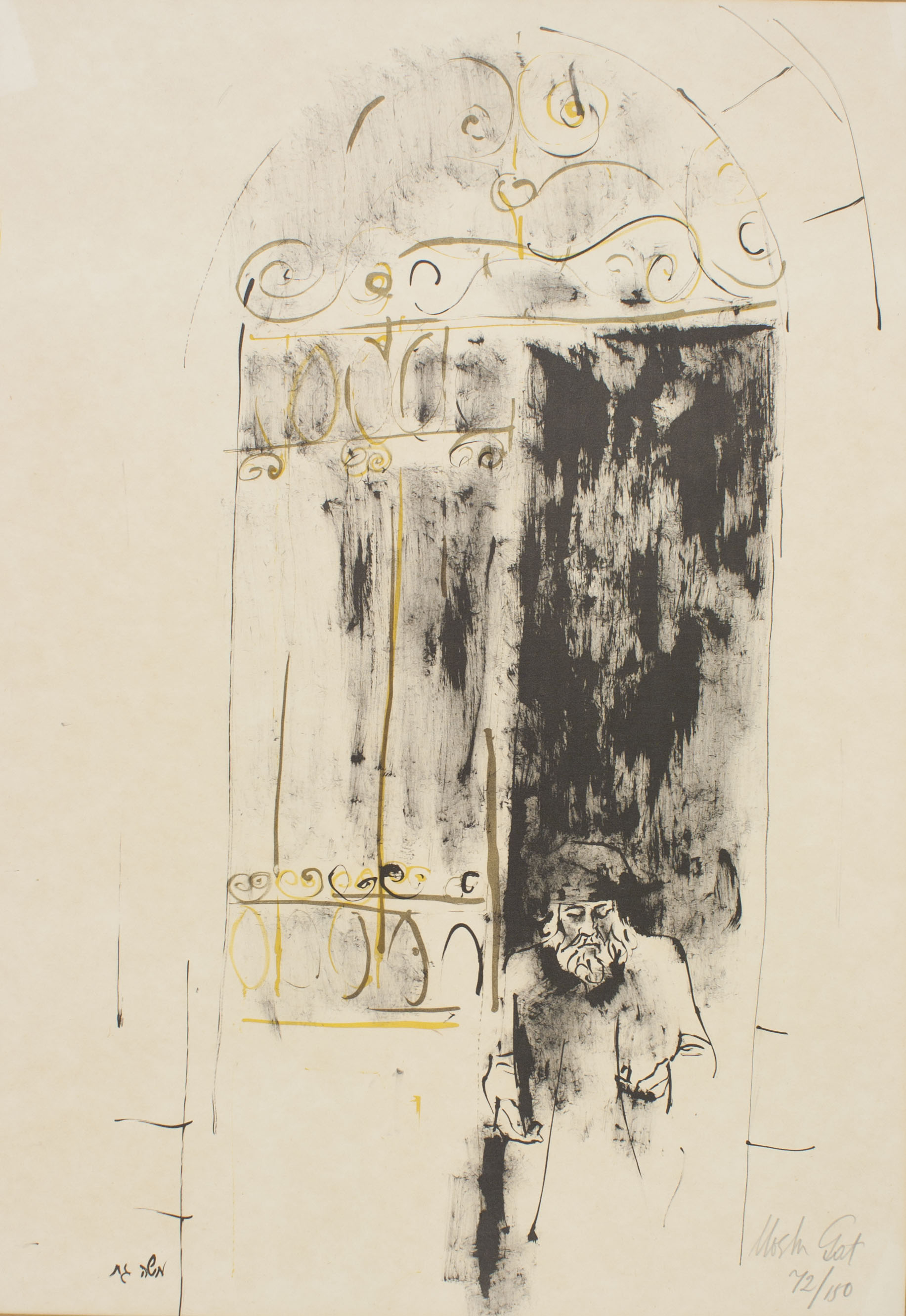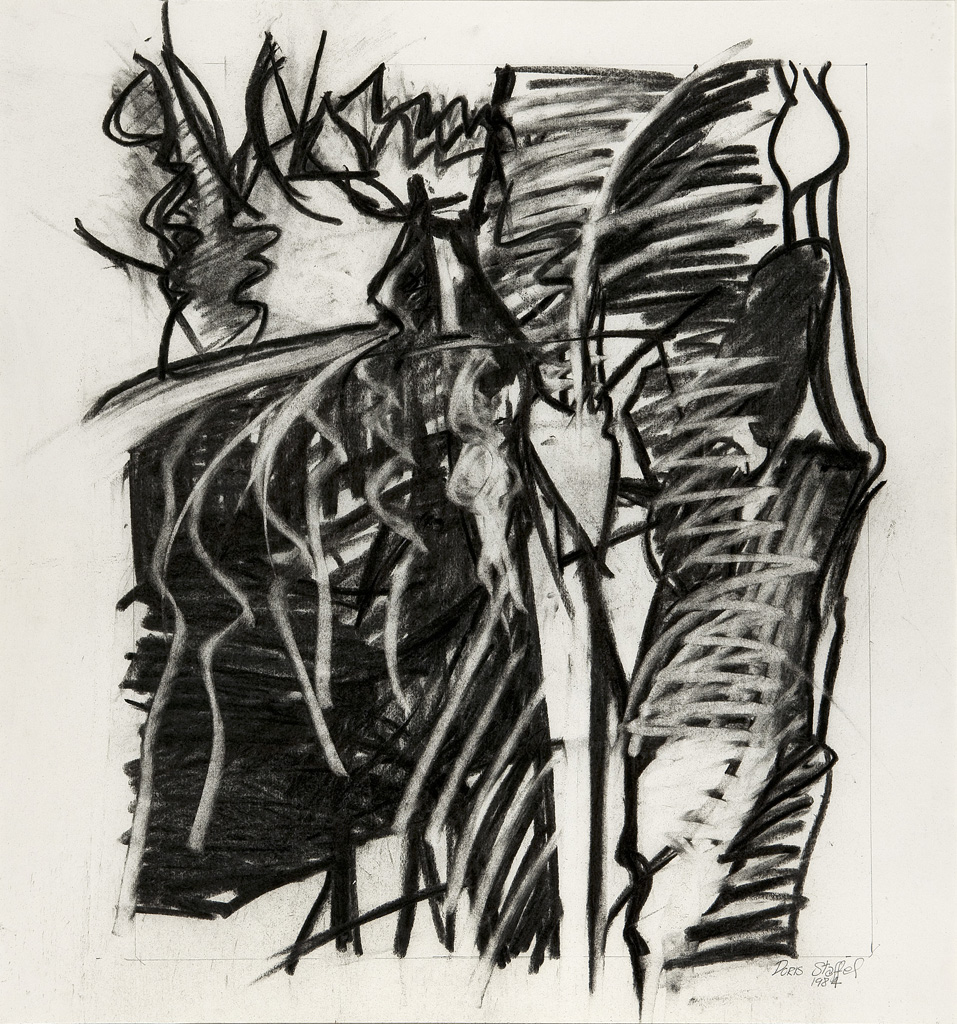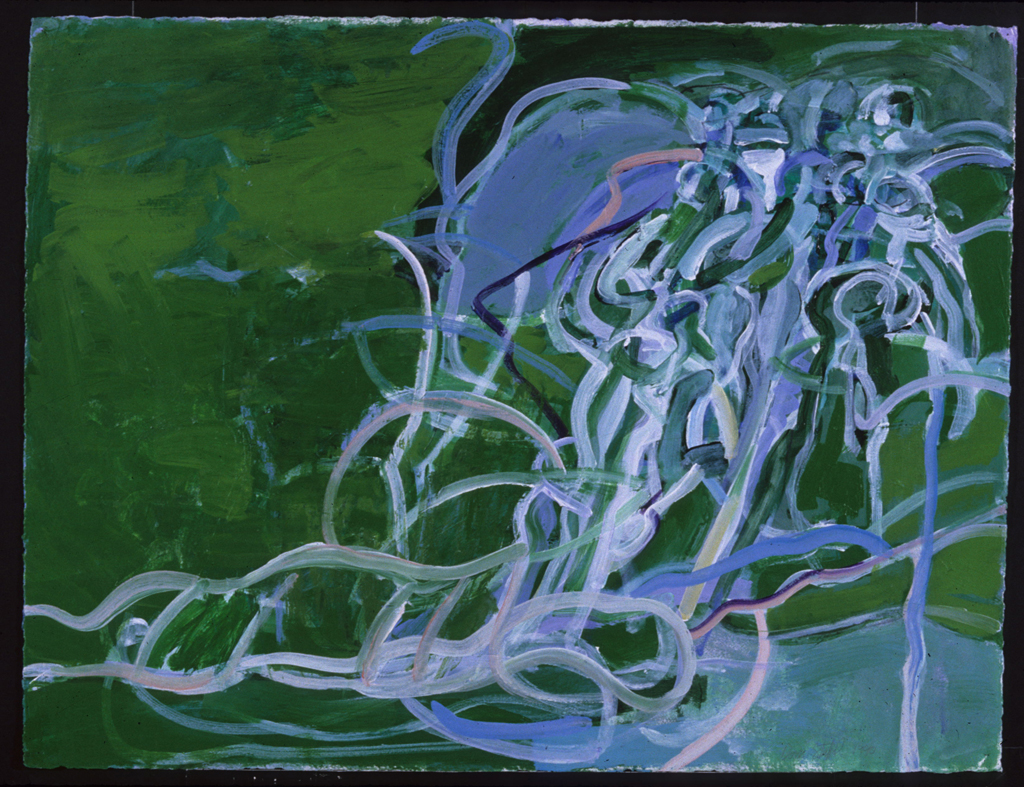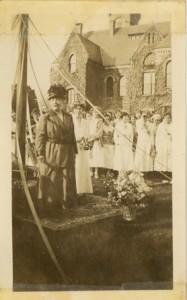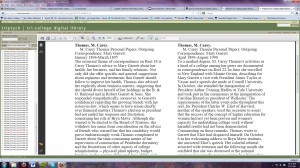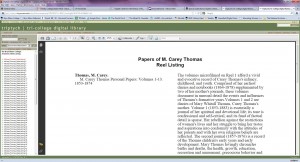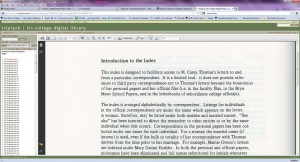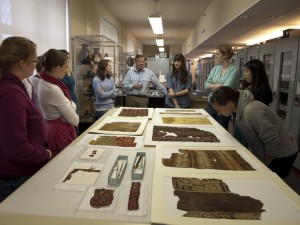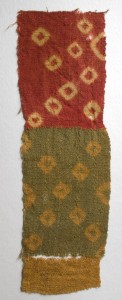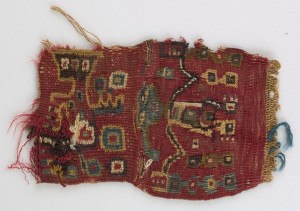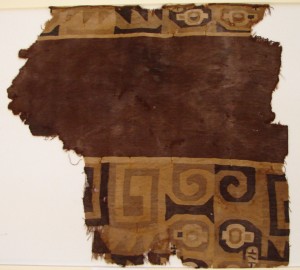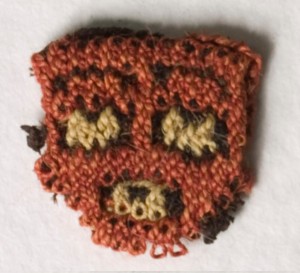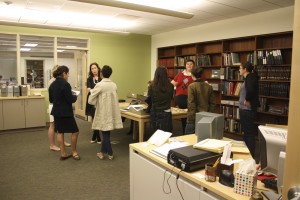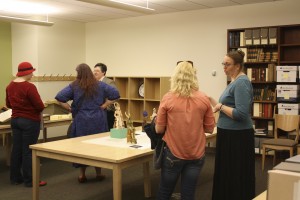Guest writer Christina Lisk (Bryn Mawr 2014) is one of 15 student ambassadors participating in Docu-Commencement, a Bryn Mawr College Special Collections artist residency/exhibition project that began with four artists –Kay Healy, James Johnson, Jennifer Levonian, and Gilbert Plantinga – spending all or most of the weekend of Commencement 2012 on campus and will culminate in an exhibition that opens in late October. In August, Lisk attended and documented studio meetings with Healy and Levonian; she and other student ambassadors will continue to participate in the development of this project.
Kay Healy—A Closer Look
By Christina Lisk
 I recently accompanied Curator and Academic Liaison for Art and Artifacts Brian Wallace and Master’s candidate in the History of Art Amy Wojceichowski to meetings with Kay Healy and Jennifer Levonian, two of four artists developing new works as part of Docu-Commencement, a residency and exhibition project organized by Special Collections.
I recently accompanied Curator and Academic Liaison for Art and Artifacts Brian Wallace and Master’s candidate in the History of Art Amy Wojceichowski to meetings with Kay Healy and Jennifer Levonian, two of four artists developing new works as part of Docu-Commencement, a residency and exhibition project organized by Special Collections.
Kay Healy, Untitled (video still from work in progress), 2012, digital image, dimensions variable; courtesy the artist
Healy, who works out of a studio space in South Philadelphia, and who recently debuted a long-term installation artwork at the Philadelphia airport, focuses her work on textiles and printmaking. The emphasis of her work is on the relationships between sociological differences, such as class, sexuality, and race, and individual memories. With these materials, and through these relationships, Healy ponders whether or not it is possible for one to truly return home. This question holds particular importance for Bryn Mawr, as many students call this campus “home” after their time in college ends. Healy and the other three Docu-Commencement artists spent 24 hours “in residence” during commencement weekend this past May; the artists are all developing new artworks to be shown on campus beginning in late October.
Healy intends to show her work in and outside of Canaday Library. While she is still pursuing a number of different possibilities, Healy is looking at installing an 8 foot wide replica of an orange couch she saw in Goodhart on Canaday’s walls. Televisions around campus may play a stop-action film of a similar orange couch being consumed by a garbage truck. Outside, silkscreened replicas of furniture will be placed on various buildings throughout campus. The decay of these replicas will be closely observed, and may have an appearance in both the exhibition and the daily lives of Bryn Mawr students.
Can a Bryn Mawr student really return home after graduation? Come answer that question through Healy’s work. For more information on Kay Healy and her projects, please see the images below or visit http://www.kayhealy.com
Jennifer Levonian—A Closer Look
By Christina Lisk
Have you ever seen another Bryn Mawr student and wondered “What is her story? What has happened to her during college?” Jennifer Levonian, a Philadelphia-based painter and animation artist, explores this question in the intricate, detailed portrait of Bryn Mawr College she is in the midst of developing for Docu-Commencement, a Special Collections artist project. One of four artists participating in Bryn Mawr’s first artist residency/exhibition, Levonian examines campus culture through intricate paintings of dorms and students. Current Bryn Mawr women will recognize people and places from their “home” instantly. Those who are unfamiliar with Bryn Mawr’s most intimate settings will see obscure, yet significant elements of Bryn Mawr in Levonian’s work.
Jennifer Levonian, Untitled (digital still from work in progress), 2012, digital image, dimensions variable; courtesy the artist and Vox Populi Gallery, Philadelphia
Levonian is converting these paintings into a 5 to 7 minute video animation that tells linked stories about Kaitlin, a fictitious Bryn Mawr student. One of Kaitlin’s stories includes pushing through an academic year, a process illustrated with paintings named for Bryn Mawr College students’ final essays. Another tale from Kaitlin’s life includes her job at Wal-Mart, where she observes people paying with food stamps and discovers she is the only worker at her Wal-Mart who attends college. How does each story end? What stories does Bryn Mawr College have to tell? Come learn the answer through Levonian’s work.
A talk by Levonian and the other three artists will be held before the Docu-Commencement opening reception at Canaday Library on October 25th, 2012. For more information on Jennifer Levonian, please attend the upcoming artist’s talk and the exhibition, or, in the meantime, visit http://www.jenniferlevonian.com/.


